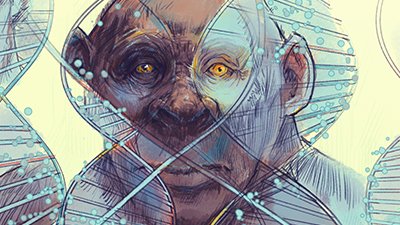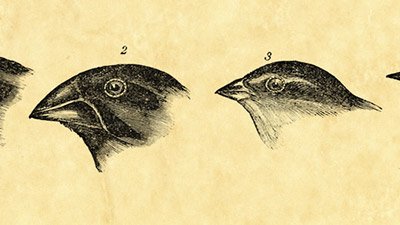
Dolphin Found with “Remains of Legs”
Should Creationists Surrender?
The following headline was featured Sunday morning (November 5) on Fox News Television: “Japanese Researchers Find Dolphin with Remains of Legs.”
The reporters on the Fox News channel were surprised to find that this story was even more popular than the news that the guilty verdict concerning Saddam Hussein had been handed down. One news reporter said, ‘I can’t believe a story about a dolphin with legs beat out Saddam’s verdict!”
In a way it is not surprising that a dolphin with supposed legs was the top story. The creation/evolution issue has been a hot one for years—and with school board elections coming up, and atheists like Richard Dawkins (probably the leading spokesperson for evolution today) with his book The God Delusion near the top of the bestseller list on Amazon and in The New York Times, evolutionists have been on the march across this country.
With the growing culture war between Christianity and secular humanism, people recognize that the foundational issue is the Bible versus human reason—and the creation/evolution issue is at the cutting edge of this battle.
Biblical creationists have been so successful in disseminating information that counteracts evolution/millions of years, that as soon as anything arises that remotely looks like it could in some way support evolutionists/millions of years, it almost immediately becomes headline news.
However, claims such as sea mammals with supposed legs have been made many times before—and AiG has numerous articles refuting these outrageous claims.
Does the Dolphin Have Legs?
Now what did researchers find? All we can go on right now are news reports (most of which are based on the same Associated Press news release)—so one has to be very careful. Like many such news reports, one has to wait for a detailed paper/documentation before making definitive statements.
According to the Fox News reports:
Japanese researchers said Sunday that a bottlenose dolphin captured last month has an extra set of fins that could be the remains of back legs, a discovery that may provide further evidence that ocean-dwelling mammals once lived on land.
So we know for sure this dolphin had an extra set of fins (not legs). Still, they state it “could be the remains of back legs.” Because of their obvious evolutionary bias, they have already jumped to a conclusion in interpreting these fins as back legs—before they have x-rayed the fins and carried out detailed research. (There is not even any mention of bones in these fins.) The article goes on to quote one researcher as saying, “I believe the fins may be remains from the time dolphins’ ancient ancestors lived on land … this is an unprecedented discovery.”
So, without any detailed research, and using phrases like “I believe” and “could be,” this is already an “unprecedented discovery.”
The same news article states categorically, “Fossil remains show dolphins and whales were four-footed land animals about 50 million years ago and share the same common ancestor as hippos and deer. Scientists believe they later transitioned to an aquatic lifestyle and their hind limbs disappeared.”
The researcher is also reported as saying, “A freak mutation may have caused the ancient trait to reassert itself … .” It certainly seems that this extra set of fins could be a mutation—as the DNA of the dolphin already has the information for fins. A mutation could cause an extra set of fins to develop (e.g., researchers have seen mutations cause extra sets of wings in fruit flies—extra legs on a cow, etc.). However, to say that the mutation “caused the ancient trait to reassert itself” is an evolutionary interpretation of a phenomenon that is quite common—mutations resulting in an extra appendage based on the information already in the genes of the animal.
Homology of Dolphin Fin Bones and Mammalian Limb Bones
It should be noted that the pectoral fins or flippers of the dolphin contain bones that are homologous (similar) to those of the human arm and hand (as well as the forelimbs of other mammals). The pectoral fin of the dolphin, for example, contains a short bone similar to the humerus (upper arm bone) of land dwelling mammals which is attached by a ball socket type joint to a scapula (shoulder blade). The humerus in turn articulates with a pair of side-by-side short bones similar to the radius and ulna (lower arm bones) of other mammals. Finally, the fin contains small bones roughly comparable to wrist bones and linear rows of bones that superficially resemble fingers.
The homology argument does not support evolution, but rather a common designer.
But there are significant differences in both structure and function between the fin bones of dolphins and the limb bones of terrestrial mammals. First, dolphins do not actually swim with their pectoral fins (this is largely a function of the tail flukes) but mostly use them to steer and to assist the flukes in stopping. Dolphins do not have a movable elbow joint and hold their pectoral fins rather rigidly out from the body. Their only mobile joint is at the shoulder. While this is an effective arrangement for simple steering and stopping it is unsuitable for walking or grasping.
The dolphin, like nearly all vertebrates, has five fingers or digits but in the dolphin there are many bones that make up the “fingers” (fin rays) rather than the typical sequence of three bones seen in the digits of humans and many other mammals. This serves to greatly lengthen the fin.
While cetaceans (dolphins, porpoises, and whales) lack hind limbs, they have pelvic bones that differ in males and females and appear to support the reproductive organs. Whether they also have rudimentary femurs and other leg bones is less certain. For evidence of whale “legs,” many evolutionists cite a paper published by Struthers in 1881 which purports to describe a rudimentary “femur” in the adult Greenland Right Whale (Balaena mysticetus). Other more recent publications suggest embryonic stages in cetaceans that resemble limb bones.
Homologous structures are seen throughout the vertebrate phyla—but as creationists have pointed out so many times, the homology argument does not support evolution, but rather a common designer. There are many problems with the homology argument as used by evolutionists. For example, the rudimentary male mammary gland and nipple are clearly homologous to those of the female, but they are not taken as evidence that males once nursed their young.
Homology tells us something about embryology—not about evolution. It is unfortunate that reporters and others often jump to conclusions before real science can be done to provide proper conclusions. Evolutionists are constantly looking for transitional forms, grasping at straws—or even fins—for evidence that just isn’t there.
Recommended Resources

Answers in Genesis is an apologetics ministry, dedicated to helping Christians defend their faith and proclaim the good news of Jesus Christ.
- Customer Service 800.778.3390
- Available Monday–Friday | 9 AM–5 PM ET
- © 2026 Answers in Genesis




